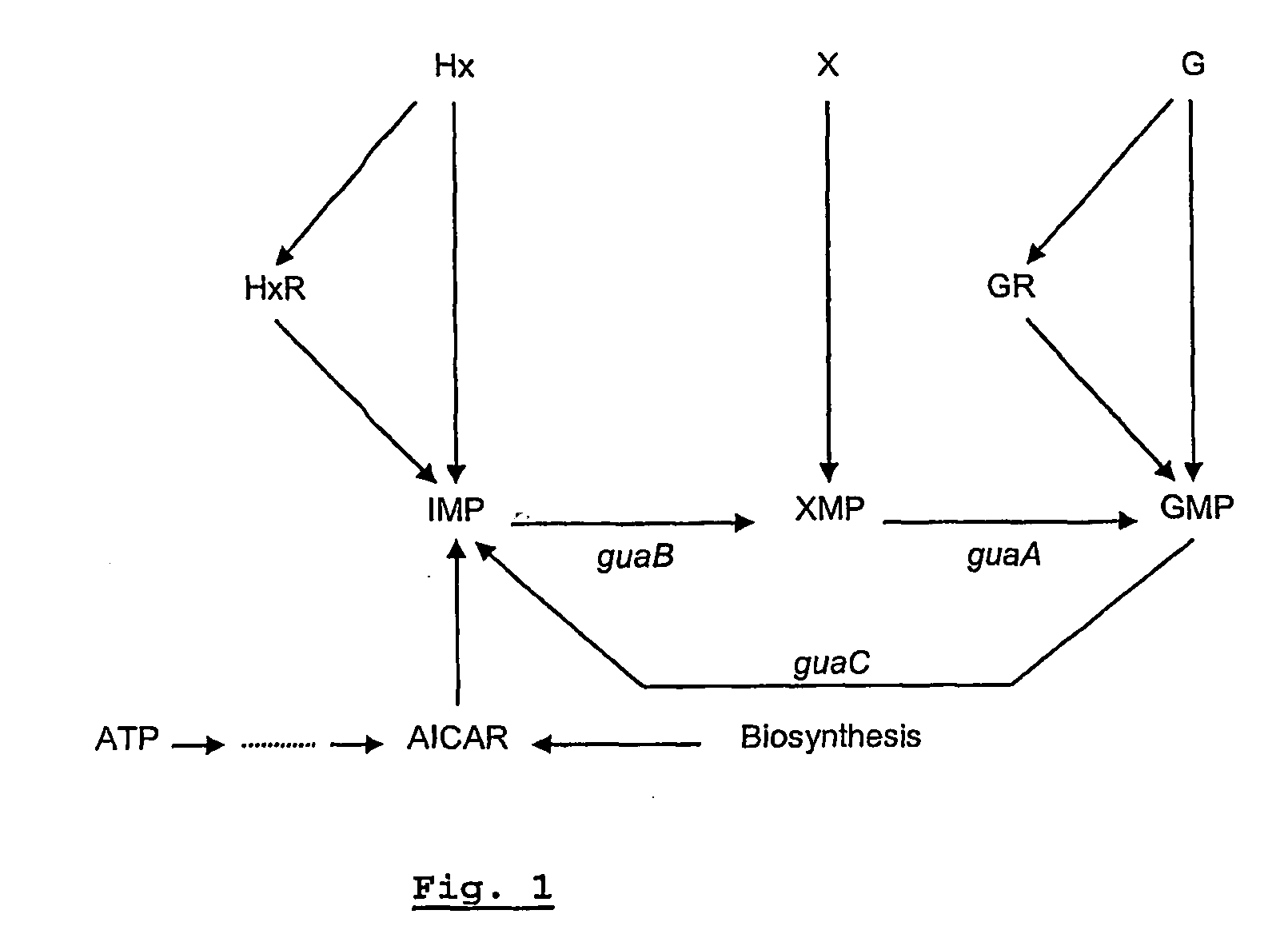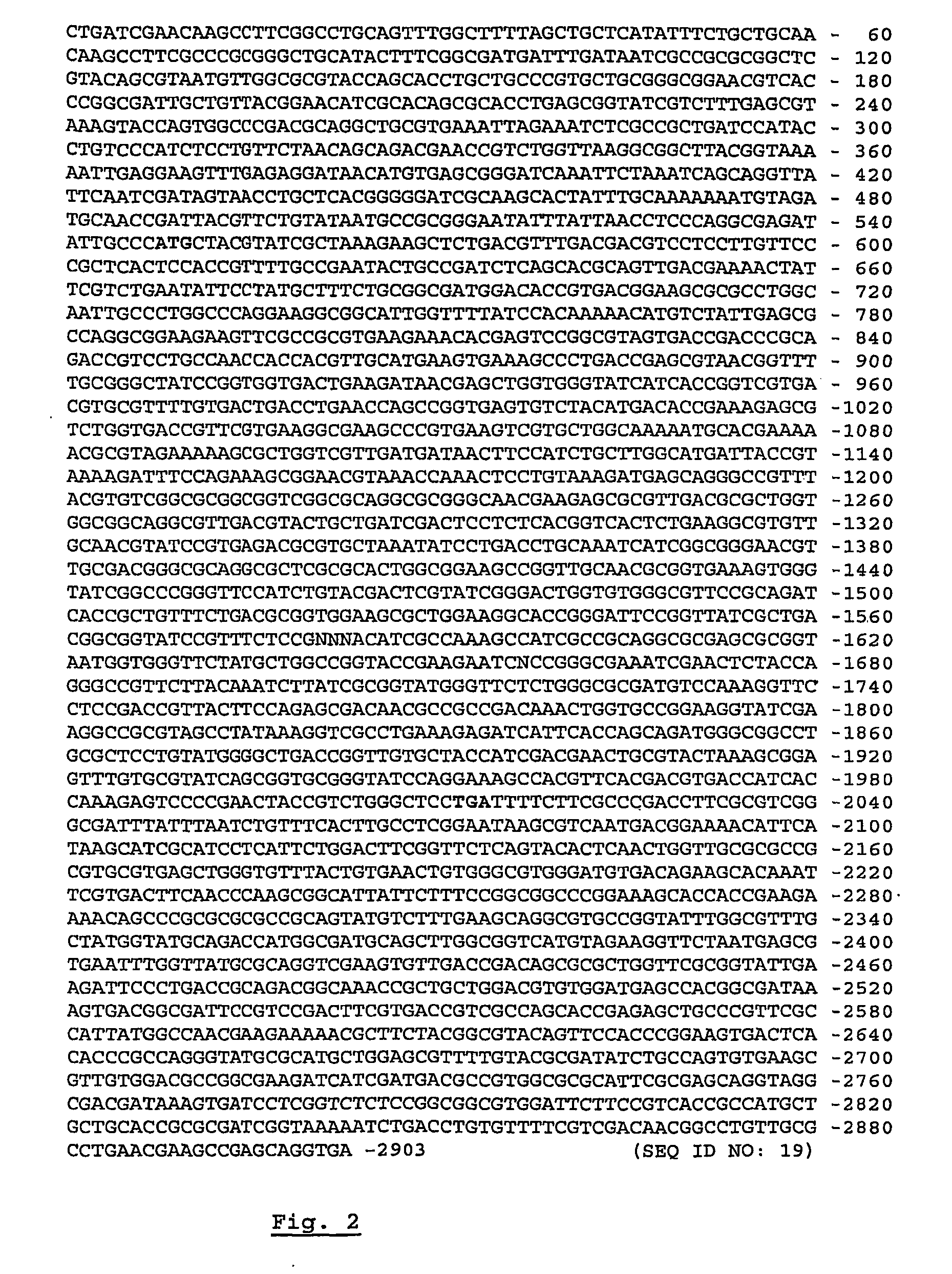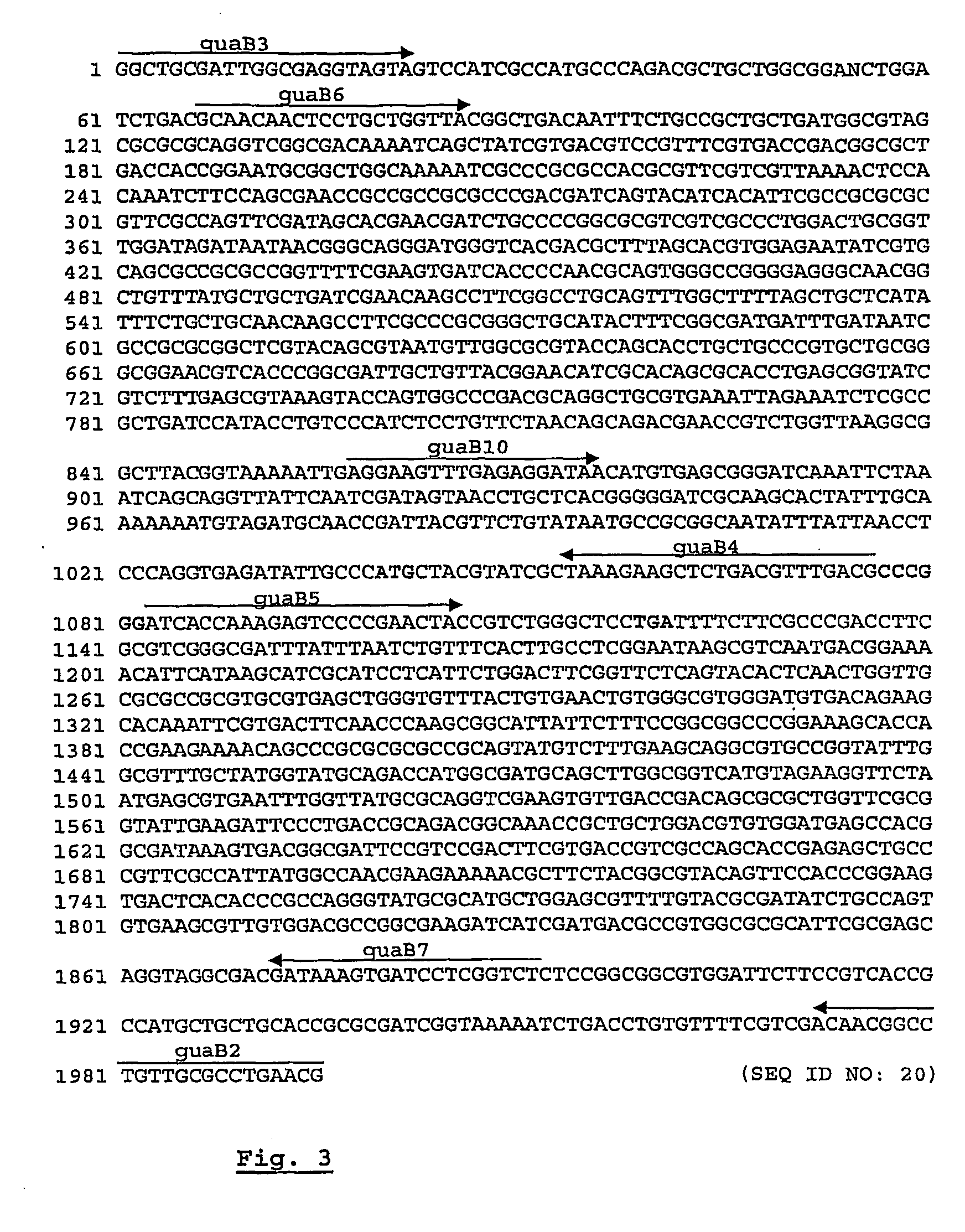Live attenuated salmonella vaccine
a technology of attenuated salmonella and live vaccine, which is applied in the field of attenuated salmonella enterica mutants, can solve the problems of inability to readily identify contaminated food, inability to effectively control salmonella, and general poor protection of inactivated vaccines, so as to reduce the remaining virulence and reduce the residual virulen
- Summary
- Abstract
- Description
- Claims
- Application Information
AI Technical Summary
Benefits of technology
Problems solved by technology
Method used
Image
Examples
example 1
Auxotrophic Mutation that Affects the guaB Gene
[0108]An auxotrophic insertion mutant of a wild type S. Enteritidis was obtained via insertion mutagenesis. Only when supplemented with 0.3 M guanine, xanthine, guanosine or xanthosine could the mutant strain grow on Minimal A medium.
[0109]These data strongly suggest that the auxotrophic mutation of the strain affects the guaB gene, encoding the enzyme IMP dehydrogenase (EC 1.1.1.205). This enzyme converts inosine-5′-monophosphate (IMP) into xanthosine monophosphate (XMP) as indicated in FIG. 1.
[0110]An insertion mutant can revert, thereby restoring the pathogenicity of the strain. This can limit its applicability in a live attenuated vaccine. In that aspect deletion mutants are preferred. guaB deletion mutants of S. Enteritidis and S. Typhimurium were therefore created and tested. The guaB genes of both serovars are given in FIGS. 2 and 5.
example 2
guaB Deletion Mutants
[0111]Construction of guaB Deletion Mutants
[0112]A method to generate deletion mutations in the genome of E. coli K12 that was previously published (Datsenko and Wanner, 2000, PNAS 97:6640-6645) was applied for this aim. This method relies on the homologous recombination, mediated by the bacteriophage λ Red recombinase system, of a linear DNA fragment generated by PCR wherein the guaB sequence is substituted by an antibiotic resistance gene. This resistance gene is surrounded by FRT sites and can be excised from the genome by site-specific recombination, mediated by the FLP recombinase.
[0113]Overlap PCR (Ho et al., 1989, Gene 77:51-59) was applied for the deletion of an internal segment of 861 bp of the guaB coding sequence. The principle relies on the use of two primer sets, GuaB3-GuaB4 (flanking the 5′ end of the guaB gene) and GuaB5-GuaB2 (flanking the 3′ end of the guaB gene). Both sets contain primers (GuaB4 and GuaB5) that are partially complementary and t...
example 3
Flagellin Mutants of S. Enteritidis and S. Typhimurium
[0125]It was then tested whether an additional (a further) modification in a motility gene (e.g. a flagellin gene) could further reduce the residual pathogenicity that remained in single mutants like SM20 that carry a deletion mutation in the guaB gene.
[0126]S. Enteritidis strains that contain only one gene coding for flagellin, fliC, were used in preliminary experiments. Double mutants were constructed wherein the guaB and fliC genes of S. Enteritidis were inactivated. For S. Typhimurium, double (ΔguaBΔfliC; ΔguaBΔfljBA) and triple (ΔguaBΔfliCΔfljBA) mutants were constructed.
Construction of Af / iC Mutants (SM24, SM30)
[0127]PCR using the FliCP1-FliCP2 primer combination on the template plasmid pKD3 (catFRT) or pKD4 (kanFRT) amplifies the recombinant fragment which contain the antibiotic resistance gene together with the FRT sites and priming sites P1 and P2, and extensions homologous to the initial 50 (1-50) and the terminal (146...
PUM
| Property | Measurement | Unit |
|---|---|---|
| Fraction | aaaaa | aaaaa |
| Time | aaaaa | aaaaa |
| Volume | aaaaa | aaaaa |
Abstract
Description
Claims
Application Information
 Login to View More
Login to View More - R&D
- Intellectual Property
- Life Sciences
- Materials
- Tech Scout
- Unparalleled Data Quality
- Higher Quality Content
- 60% Fewer Hallucinations
Browse by: Latest US Patents, China's latest patents, Technical Efficacy Thesaurus, Application Domain, Technology Topic, Popular Technical Reports.
© 2025 PatSnap. All rights reserved.Legal|Privacy policy|Modern Slavery Act Transparency Statement|Sitemap|About US| Contact US: help@patsnap.com



